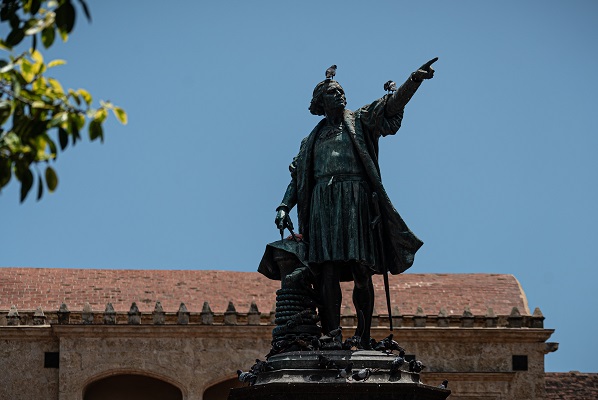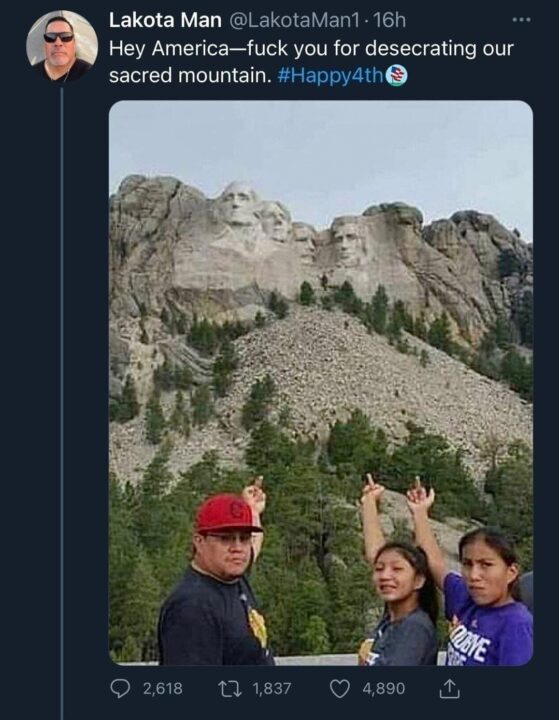Columbus Day is only six weeks away and some folks will want to call it indigenous people’s day. But we have demonstrated on these pages repeatedly that 1) North America had no indigenous people and 2) those that came here frequently displaced others long before Columbus and long after.
Put another way, this land was “conquered” repeatedly by groups of human beings whose ancestors were from someplace else and whose offspring warred and fought each other over resources for millennia.
But we don’t need to go back that far to expose another facet of the lie of ‘Indigenous Peoples.’
In today’s tale, we discuss the Lakota Sioux and the Black Hills of South Dakota.
Related: North America has No Indigenous People But Let’s Name a Day After Them Anyway.
The Black Hills has only had human occupants for about 10,000 years. Since then, several peoples have occupied or conquered the area to call it their own. Before the Europeans took it over, the last tribe to do this was the Lakota Sioux (Lakota), a few of whom are offended that their ancestors were “conquered” or displaced.
Lakota man is not happy, but then, neither I suspect were “the Cheyenne, Crow, Kiowa, and Pawnee,”
“…when the Lakota arrived in the 18th century, they drove out the other tribes and claimed the land for themselves. The lands soon became sacred to the Lakota Sioux, who called them Paha Sapa, which means “hills that are black.”
The Lakota drove them out, probably through barter, threats, shows of force, or violence. They conquered the land, taking it from the “indigenous people” who occupied it before them, just as those people had done to whoever came before they did.
Those lands and that mountain (Mount Rushmore) were likely unknown to the Lakota until the beginning of the American Revolution. Not sacred at all until much of the eastern seaboard was occupied by increasingly disgruntled Europeans.
That must mean that I can declare New England and as much of the Eastern United States as I feel inclined, sacred European Land? It had been occupied, systematically tamed, and culturally converted (through barter, threats, shows of force, or violence) beginning 150 years (more or less) before the Lakota stumbled into the Black Hills of South Dakota.
I mean no disrespect to the Lakota or anyone else. I am merely pointing out a fact in support of other facts.
The story of North America is one of conquest, first by people discovering an empty continent and then by tribes of those people warring or politicking with each other for thousands of years for control of its land and resources. A process that began with someone walking onto and claiming land because there was no one there at the time or at that time able to resist them.
In every case of competing claims, the result is a treaty or war.
Being the last ‘tribe’ or most recent people born or displaced by another is our history, and we should not allow anyone to let us forget it. Any of it. We should work to enhance it, complete it, learn from it. But let’s not pretend the last conqueror was the only one or that any that preceded theirs was peaceful.
Columbus Day represents – for good or bad – the beginning of the European conquest of North America. Often bloody and frequently awful, but how much more or less than those that preceded it?
Whatever we may think of Columbus or his day, we need to stop pretending that the people born on this content before us have any more right to it or to be indigenous than anyone born here who came before them or after. Or, that has most recently lost control of some or all of it, are the only indigenous people here.

